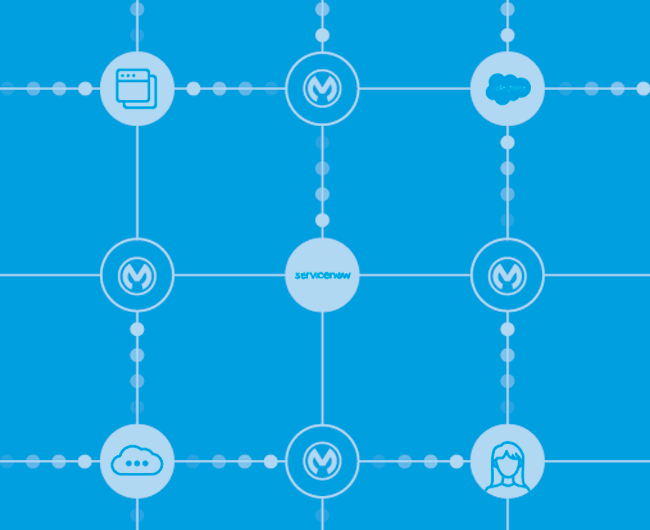Mulesoft, together with Salesforce, has become the market’s leading integration tool. It plays a key role in helping companies that are immersed in the challenge of digital transformation and need to integrate the different technologies they work with.
We are in an increasingly connected world, with new applications and technological tools that are constantly evolving, in addition to a global pandemic that further accelerates the process of digital transformation. Companies need to renew themselves by adapting to digitalization if they want to remain competitive. They need to really know their customers and access all the information gathered about them, often from different internal and external data sources, in a fast, agile and safe way.
What is MuleSoft?
MuleSoft is a market-leading integration software company that provides solutions for integration between systems. It was acquired by Salesforce in May 2018 for over $6 billion.
Its Anypoint Platform is an iPaaS (Integration Platform-as-a-Service) type solution that provides the necessary tools for the entire API life cycle: designing, creating, implementing and operating an application network.
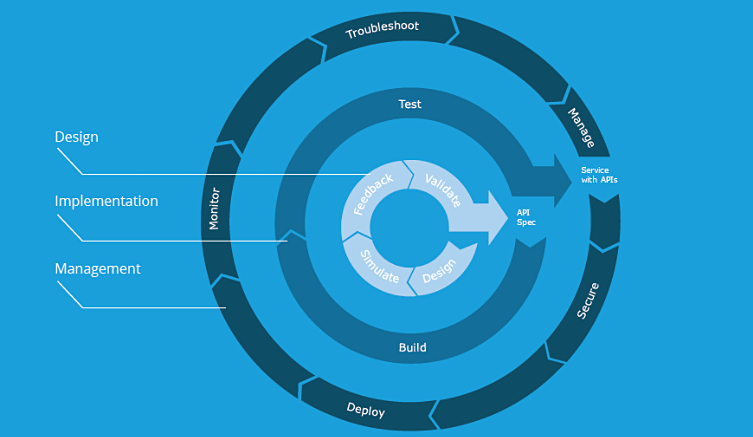
Starting Point: How to integrate different management systems.
Up to now, the most common (but inefficient) way of designing an integration between different systems has been the point-to-point integration approach. This type of integration implies that each application has to be customized to communicate with the others, resulting in a network of highly complex integrations. It also implies a lot of custom code, and any minor change entails a great cost to change the whole network.
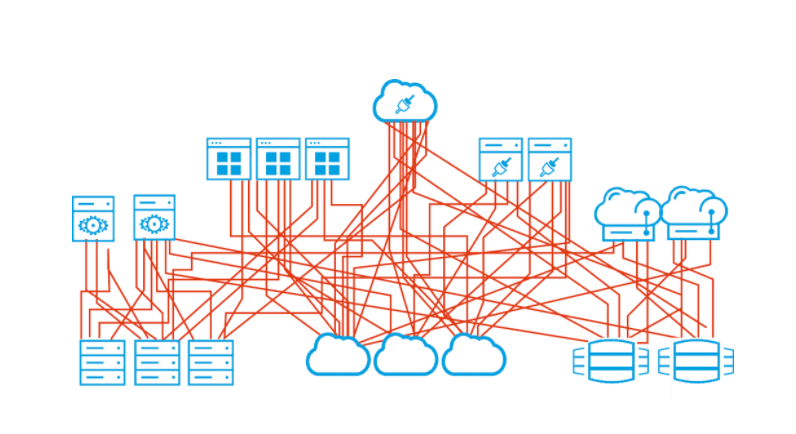
It is a difficult model to scale, reuse and maintain. As a result, businesses lose the agility they need to respond to sudden changes in industry.
Mulesoft’s new Approach: API-Led Connectivity.
This is the new concept that MuleSoft proposes to change the “obsolete” approach of point-to-point integrations. It is based on generating reusable assets on a three-layer architecture that facilitates the use and reuse of APIs to create an easily scalable “network” of applications that reduces the impact of new changes.
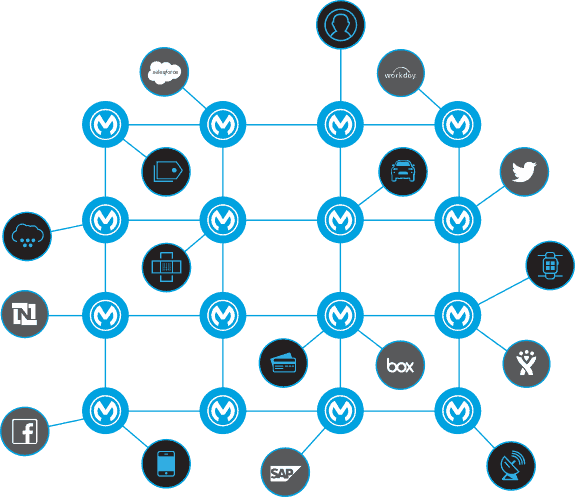
Salesforce MuleSoft categorizes the APIs in three distinct groups:
- Experience APIs: Dedicated to the presentation of information reusing the logic implemented in the lower layers. These generally serve client applications (webs, wearables, mobile apps, other server-apps).
- Process APIs: Process the data obtained in the system layer and apply the corresponding logic to cover the different business needs. This is where business processes are built and coordinated.
- System APIs: Set of APIs and connectors that connect to data source systems.
MuleSoft characteristics and advantages.
Here are some of the features and advantages of using MuleSoft and its Anypoint Platform system:
- Speed: Shorten the development and implementation cycles of the integrations.
- Reusability: No need to start from scratch every time the business demands greater connectivity and new data sources, taking advantage of developments over and over, thanks to MuleSoft AnyPoint Exchange, a marketplace (similar to the Salesforce AppExchange) where you can find hundreds of components and more than 400 connectors to connect to virtually any system.
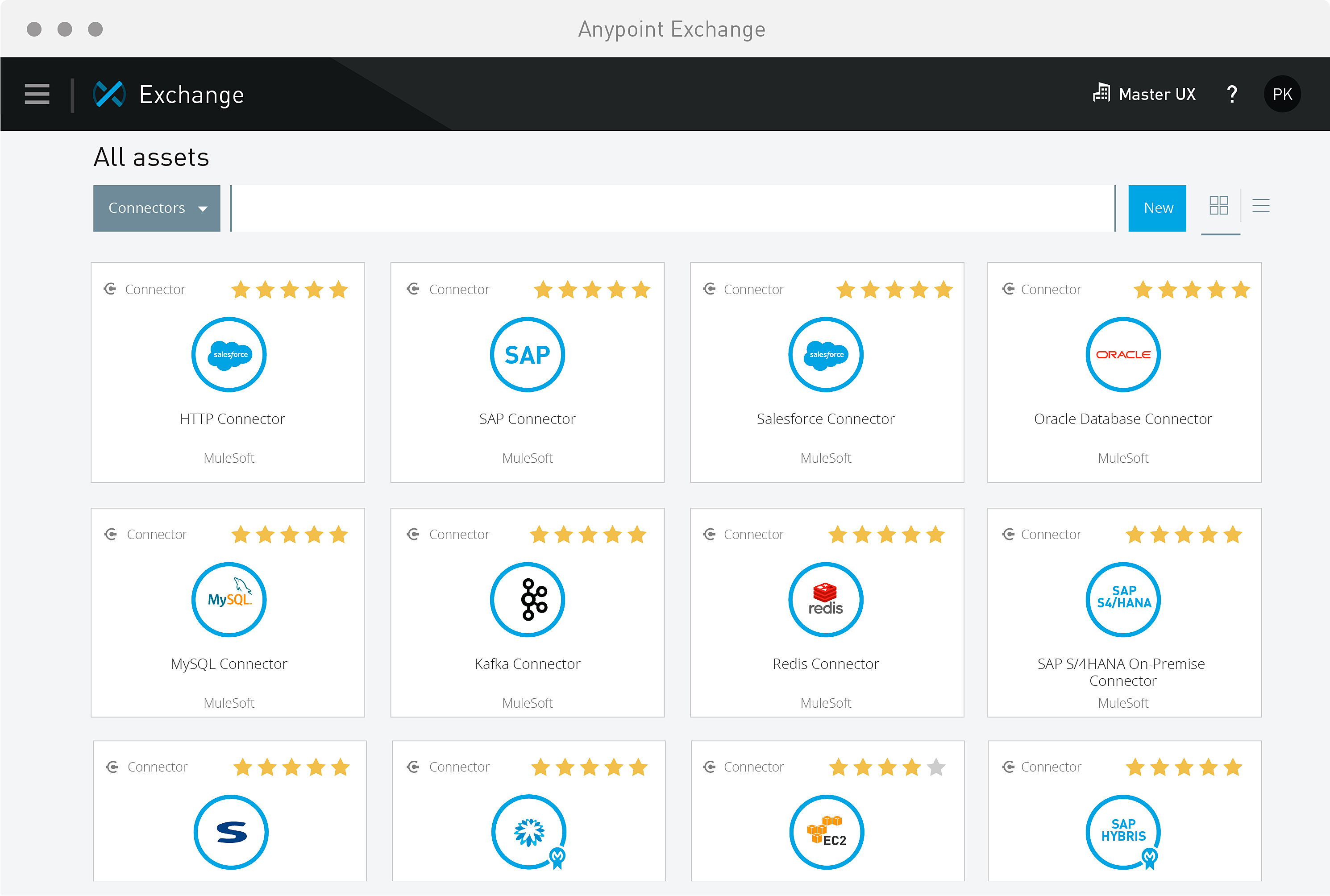
- Design and Development: MuleSoft includes the tools necessary to design, develop and test:
- API Designer: Design, document and test the APIs in a visual web environment.
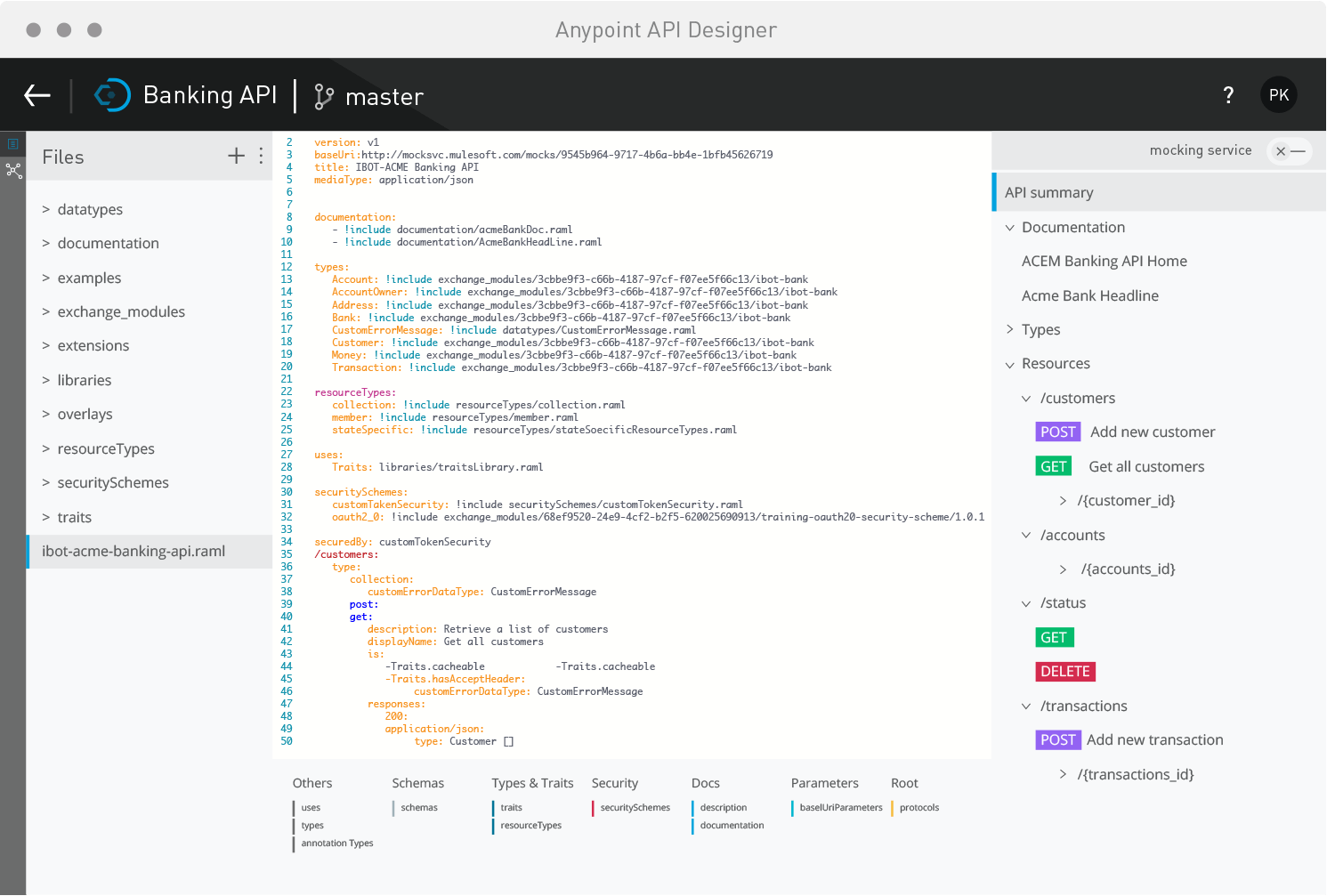
- Mulesoft AnyPoint Studio:
Development environment based on Eclipse, where by means of a drag and drop interface users can consume and configure the different components (connectors, modules, etc) to implement the necessary logic and the corresponding data transformations.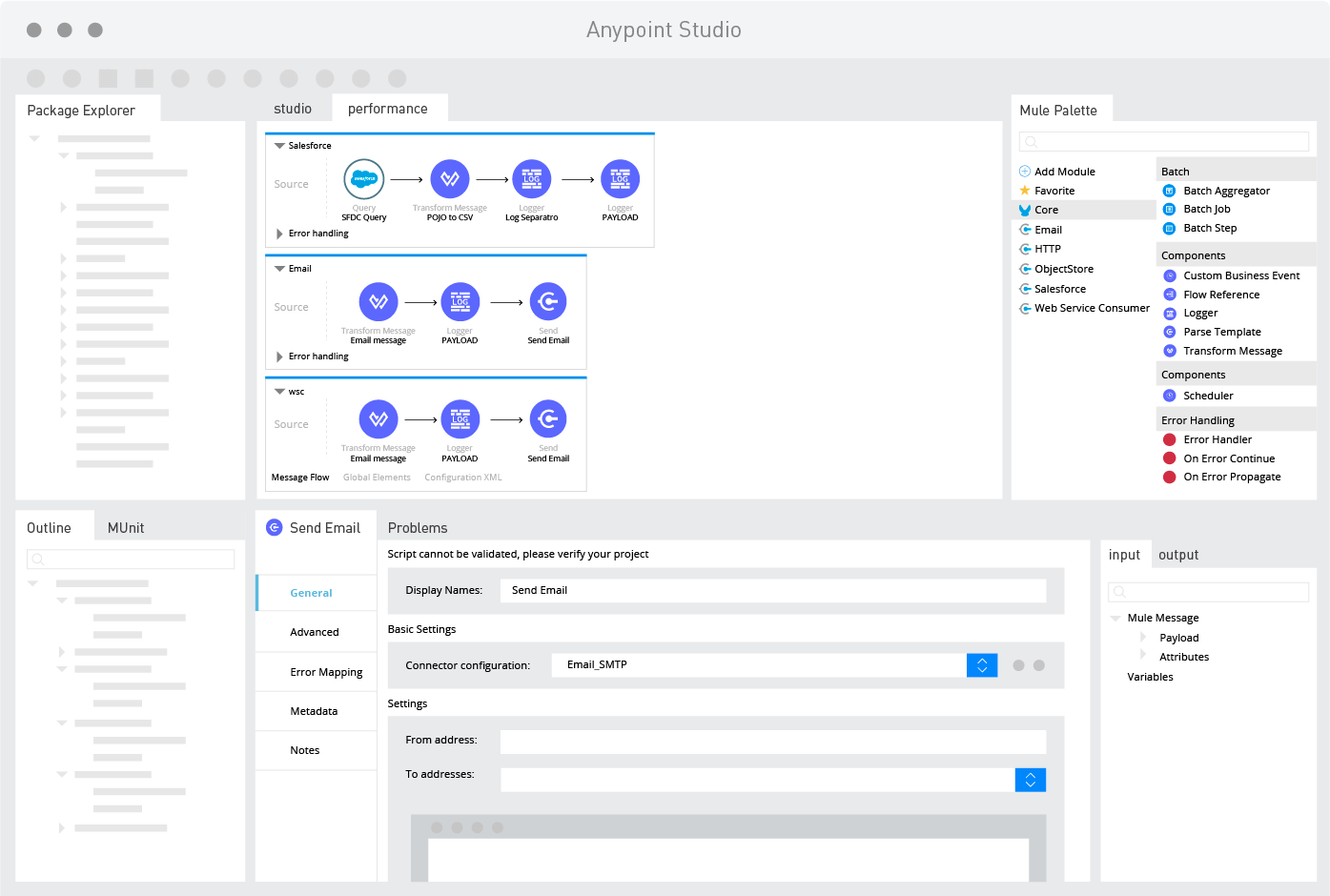
- Hybrid Platform: MuleSoft can be used in any environment, whether on-premises, public clouds (AWS, Azure, Google) or in MuleSoft’s own iPaaS (called CloudHub).
- Security: Access policy management: proxy, cache, white and black lists, attack protection, application limits and alert configuration.
- Control and reporting: Track API usage metrics, transactions by region, and performance with custom dashboards. Check problem identification, diagnostics, and log management in a single unified interface.
So why Mulesoft?
Salesforce’s MuleSoft is the conductor among multiple systems, the perfect tool that centralizes management of all the integrations in our digital ecosystem. Thanks to the reusability of its components, which not only accelerates development but also favors scalability in later phases, it provides the agility needed to respond to new business needs, new data sources, and sudden changes in the industry, playing a key role in digital transformation processes.
If you’d like to know more about MuleSoft, please contact us. As a strategic partner we have all the information you need for your next integrations with MuleSoft.


